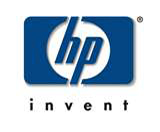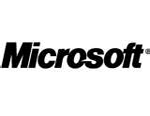Samsung Goes Star-ups
 Samsung will put $1.1 billion towards venture capital funding of semiconductor firms.
Samsung will put $1.1 billion towards venture capital funding of semiconductor firms.
The company said that it will commit the research and development funding through its Samsung Venture Americas branch and Catalyst Fund investment operations, according to multiple reports.
The investment is set to target semiconductor design and manufacturing. The company will look to fund startups that can assist its hardware units and will open a new R&D facility in Silicon Valley.
The announcement comes as Samsung is seeing its revenues hit record levels. The company reported quarterly profits of 7.5 billion to close out 2012 and sales from Samsung’s handset unit reached record levels.
Analysts believe that the company now controls nearly 23 percent of the smartphone market. The jump in hardware sales has brought with it a healthy appetite for components. Earlier this month Samsung passed Apple to become the world’s largest single user of semiconductor chips.
Samsung has recently stepped up its investment activities, with the firm buying storage vendor Nvelo and last week buying a small stake in Wacom, best known for its touchpad and stylus input technology. With the firm looking to invest in startups, it is perhaps looking to follow in Apple’s footsteps, which kickstarted its chip design efforts by buying PA Semiconductor and later Intrinsity, and invested in Imagination Technologies.
HP Looks Beyond Windows
 Hewlett-Packard has announced the availability of its latest Pavilion laptop with Google’s Chrome OS as the PC maker attempts to improve laptop sales by offering an alternative to the Windows OS.
Hewlett-Packard has announced the availability of its latest Pavilion laptop with Google’s Chrome OS as the PC maker attempts to improve laptop sales by offering an alternative to the Windows OS.
The Pavilion 14 Chromebook has a 14-inch screen and runs on a dual-core Intel processor. The laptop is roughly 21 millimeters thick, and weighs 1.8 kilograms. It offers just over four hours of battery life, said David Conrad, director for product management at HP’s consumer products group.
The laptop is expected to ship on Monday in the U.S. starting at $329.99. The company did not immediately provide worldwide availability information.
HP wanted to widen its product offerings and the new Chromebook is targeted at those who do most of their computing on the Web, Conrad said.
“It’s really about choice. We have a very wide offering,” Conrad said. “We think the time is right for an additional choice for people to have a gateway to their Google digital lifestyle.”
The laptop has only 16GB of solid-state drive storage, but will offer 100GB of free Google Drive storage for two years.
The Chromebook has the same design as HP’s other PC offerings, which mostly run on Windows and have standard-capacity hard drives. But, with a lot of data moving to the cloud, the Chromebook provides a different usage model.
“We see this as another device to be used around the house. It’s easily managed,” Conrad said.
Developers Gaining Interest In WP8
February 11, 2013 by admin
Filed under Smartphones
Comments Off on Developers Gaining Interest In WP8
 Developers are becoming increasingly interested in developing apps for Windows Phone and BlackBerry 10.
Developers are becoming increasingly interested in developing apps for Windows Phone and BlackBerry 10.
According to ABI Research, Android and iOS remain dominant platforms, with Android in the lead in the smartphone space and iOS dominating the tablet market.
However, developers are also focusing on Windows Phone and BB10. AI analyst Aapo Markkanen believes 45 million Windows Phone devices will be in use by the end of the year, along with up to 20 million BB10 devices. Redmond will also have 5.5 million Windows powered tablet by the end of the year.
AMD Releases Vishera
 Although it was detailed back in August last year, AMD has just now officially released its new “affordable” Vishera based FX-4130 quad-core socket AM3+ CPU.
Although it was detailed back in August last year, AMD has just now officially released its new “affordable” Vishera based FX-4130 quad-core socket AM3+ CPU.
The new CPU is part of AMD’s 4100-series and is based on Vishera core design with four Piledriver cores. It works at 3.8GHz base clock and can “turbo” up to 3.9GHz. It packs 4MB of L2 and 4MB of L3 cache and has a 125W TDP.
According to the slide over at Xbitlabs.com, the FX-4130 replaces the FX-4100 with the same US $101 price but should provide between 3 and 9 percent more performance.
As things get better with Globalfoundries and their 32nm process technology, AMD is expected to introduce new models based on cut-down versions of Vishera, according to the report.
No LTE On IBM’s SoC Until 2014
 Intel is working on integrated LTE modems for its upcoming SoC designs, but CEO Paul Otellini claims they will not be ready for prime time until 2014.
Intel is working on integrated LTE modems for its upcoming SoC designs, but CEO Paul Otellini claims they will not be ready for prime time until 2014.
In a recent conference call Otellini was directly asked about Intel’s plans for LTE integration and said “higher levels of integration” are expected next year. He went on to say that the first Intel-based phones with LTE should launch in early 2014, in time for the Mobile World Congress.
Otellini said Intel’s wireless team, formerly a business unit of Infineon, is making good progress in LTE.
“We believe we have a very competitive solution. The Infineon team is known for not necessarily being first to market, but being really good at engineering a very solid solution and being cost effective and cost competitive and I think that they are doing a very good job with respect to this product,” said Otellini.
Blackberry Makes A Comeback
February 5, 2013 by admin
Filed under Smartphones
Comments Off on Blackberry Makes A Comeback
Research In Motion has hinted that it will unveil two new handsets early next month to accompany the release of its BlackBerry 10 operating system.
RIM is expected to unveil the phones at an event in New York City on Wednesday and will begin promoting BlackBerry 10 to consumers the following Sunday, Feb. 3, when it will air a TV commercial during the Super Bowl.
The sporting event attracts one of the largest TV audiences of the year in America, and companies pay millions of dollars for a 30-second advertising spot, underscoring how important it is for RIM that its new BlackBerry platform will be a hit. The same commercial will also air in Canada, RIM’s home country.
In announcing its publicity plans Friday, RIM also hinted at when the phones will be available to consumers. It said the TV spot “kicks off a week of worldwide launch activity for RIM’s BlackBerry 10 platform, along with the first two devices to run on the new platform.”
If the commercial marks the start of a weeklong buildup to the launch, that would put the North American release of the phones at roughly the start of the second week in February.
TSMC 20nm Processors In High Demand
 TSMC believes demand for next-generation 20nm chips will be even higher than demand for current 28nm products.
TSMC believes demand for next-generation 20nm chips will be even higher than demand for current 28nm products.
Speaking in a conference call, TSMC CEO Morris Chang said the volume of 20nm SoCs built next year will be greater than 28nm volume in 2012 and by 2015 it should be greater than 28nm volume in 2013.
TSMC hopes to start 20nm production in the latter part of the year. The company is constructing two new facilities at Fab 15 and it hopes to start 20nm production in both simultaneously. We could be in for a quick ramp.
TSMC will offer only one version of the 20nm process, compared to four versions of the 28nm process. This should also allow it to ramp up volume production faster, reckons Xbit Labs.
Will Microsoft Buy A Slice of Dell?
 Microsoft Corp is in talks to invest between $1 billion and $3 billion of financing in a buyout of Dell Inc, CNBC cited unidentified sources as saying on Tuesday.
Microsoft Corp is in talks to invest between $1 billion and $3 billion of financing in a buyout of Dell Inc, CNBC cited unidentified sources as saying on Tuesday.
Private equity outfit Silver Lake Partners is working to finalize a bidding group to take the world’s No. 3 PC maker private, and has started discussions with potential equity partners, sources familiar with the matter have said.
Dell also has formed a special committee to take a close look at any potential deal on the table, multiple sources with knowledge of the matter told Reuters. If successful, it would be one of the largest corporate buyouts since before the global financial crisis.
Microsoft, which accelerated its foray into computer hardware in 2012 with the launch of the Surface tablet, will provide the capital in the form of mezzanine financing according to CNBC, which is a hybrid of debt and equity.
Windows Phone Is Making Gains
January 29, 2013 by admin
Filed under Smartphones
Comments Off on Windows Phone Is Making Gains
 Microsoft’s Windows Phone mobile operating system is slowly increasing its market share in the UK, while Apple edges closer to archival Samsung.
Microsoft’s Windows Phone mobile operating system is slowly increasing its market share in the UK, while Apple edges closer to archival Samsung.
That’s according to the latest numbers from research firm Kantar Worldpanel Comtech, which show that Microsoft’s Windows Phone has increased its UK market share from 2.2 percent to 5.9 percent in the past 12 months. The mobile operating system is doing even better in countries such as Italy, where it boasts a 13.9 percent market share.
Dominic Sunnebo, global consumer insight director at Kantar Worldpanel Comtech said, “At the end of 2012 the global OS picture shows Android on top, but clearly the rate of growth it experienced over the past year is beginning to slow as easy wins from first time smartphone buyers begin to reduce.
“It has been far slower than Microsoft would have liked, but Windows Phone is now starting to gain respectable shares in a number of key European countries.”
“However, its performance in the Chinese and US markets remains underwhelming. As the two largest smartphone markets in the world these remain key challenges for Microsoft to overcome during 2013.”
Kantar Worldpanel Comtech has also revealed that Apple is edging closer to rival Samsung, with each firm clinging to 32 percent and 35 percent of the smartphone market, respectively. Given that Samsung had a much healthier lead this time last year, these numbers seem to suggest that Apple’s iPhone 5 has sold better than rumors had indicated. However, all will be revealed during Apple’s quarterly earnings call tomorrow.
Apple and Samsung could soon have a third challenger on their hands, though, as research also shows that Nokia’s sales are improving in the UK smartphone market. Sales of the firm’s smartphones have increased 50 percent year-on-year, putting the firm’s market share at 5.2 percent.
FTC Defends Google Decision
January 25, 2013 by admin
Filed under Around The Net
Comments Off on FTC Defends Google Decision
The FTC defended its decision to let Google carry on with its anti-trust-like antics, while other regulations in civilized nations are planning to put the boot in.
The US Federal Trade Commission reached a settlement with Google which really did little to stop the company using its dominance to push down search results from its competitors. The move attracted considerable criticism because it followed a letter from US senators to go easy on the search engine because it was good for US jobs. We guess they mean the jobs of US senators who Google paid campaign contributions.
Google promised to change the ways it presents some search results and runs search advertising, but was exonerated of the results bias claims. Rivals including Yelp and Microsoft claimed that Google had favored its own product results over those of its competitors and called for the anti-trust case. What makes the case look more suspect is that the EU is less frightened of actually fining Google or forcing it to behave. Indeed indications from Brussels are that it has not only agreed with the rival’s complaints but will do something about it if Google does not pull finger.
But FTC chairman Jon Leibowitz told Talking Points Memo that the agency’s decision was legally sound and would be beneficial to competition and consumers. Under facts we found, all five of us, from liberal Democrat to conservative Republican, agreed that the evidence militated against an anti-trust case,” Leibowitz told TPM.
The fact that we managed to have both Google and Google’s rivals unhappy, in an odd way that’s maybe unique to Washington, that puts us in the right place substantively, he claimed. When asked if Google’s $25 million lobbying budget for the duration FTC’s investigation helped, he said that lobbying makes the companies feel good and lobbyists feel good.
“At the end of the day, whether you want to say lobbying had any influence, or cancelled itself out because there was lobbying on both sides, if you’re going to do what lobbyists want you to do in a regulatory agency, you’re not doing your job.”








 Sign up for our Technology Newsletter
Sign up for our Technology Newsletter